Multimeter
Model 665-J-2


Jackson Model 665-J-2 Volt Ohm Milliammeter which has a 600uA meter movement manufactured by Westinghouse is housed in a black crackle finished steel case with Bakelite front panel. The instrument is housed in a leatherette covered two part wooden box and is equipped with two probes and has an instruction sheet in the lid. Made by The Jackson Electrical Instrument Company, Dayton,Ohio,USA.
The 600uA meter movement which has an internal resistance of 100Ω is shunted by the 400Ω series of resistors comprising the universal shunt used for the current ranges. The instrument therfore consumes 1mA at FSD or 1000Ω per volt on the DC ranges. The sensitivity is reduced on the AC ranges as the meter is shunted by 200Ω.
Denise
Taylor gave me this meter as she was reluctant to throw it out. It belonged to her father who was
in the airforce in WW2, in bombers, and she guesses that is where it
came from. She says "goodness knows why he kept it, as with most
veterans he never talked about the war, and only on his passing did she
find his flight log and realise how many missions he flew, they
ditched and were rescued of Bishop Rock the Sciliy Isles, all but
one of them survived."
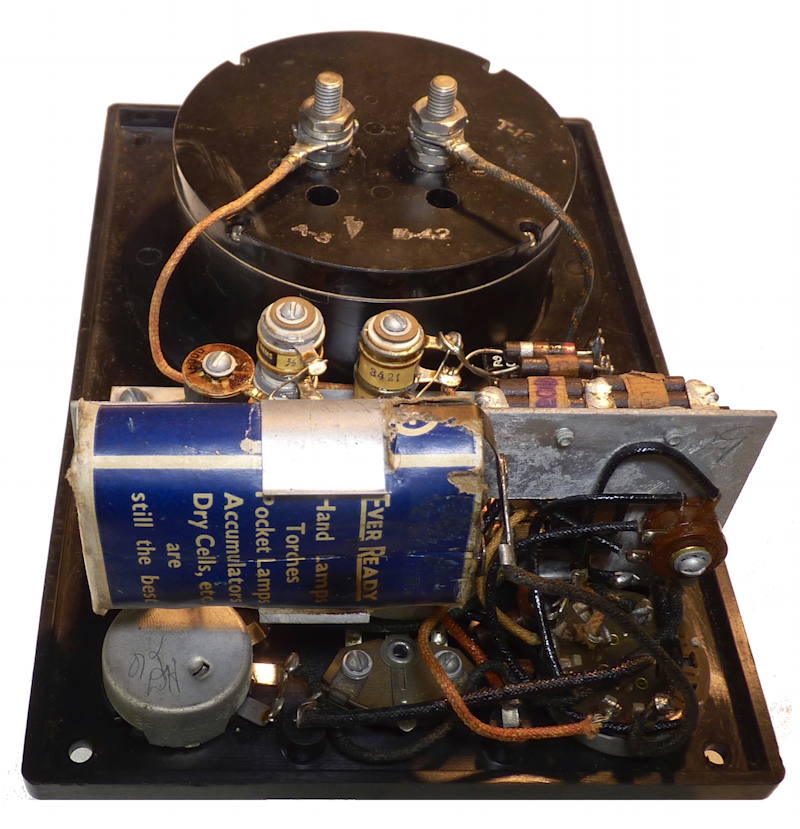
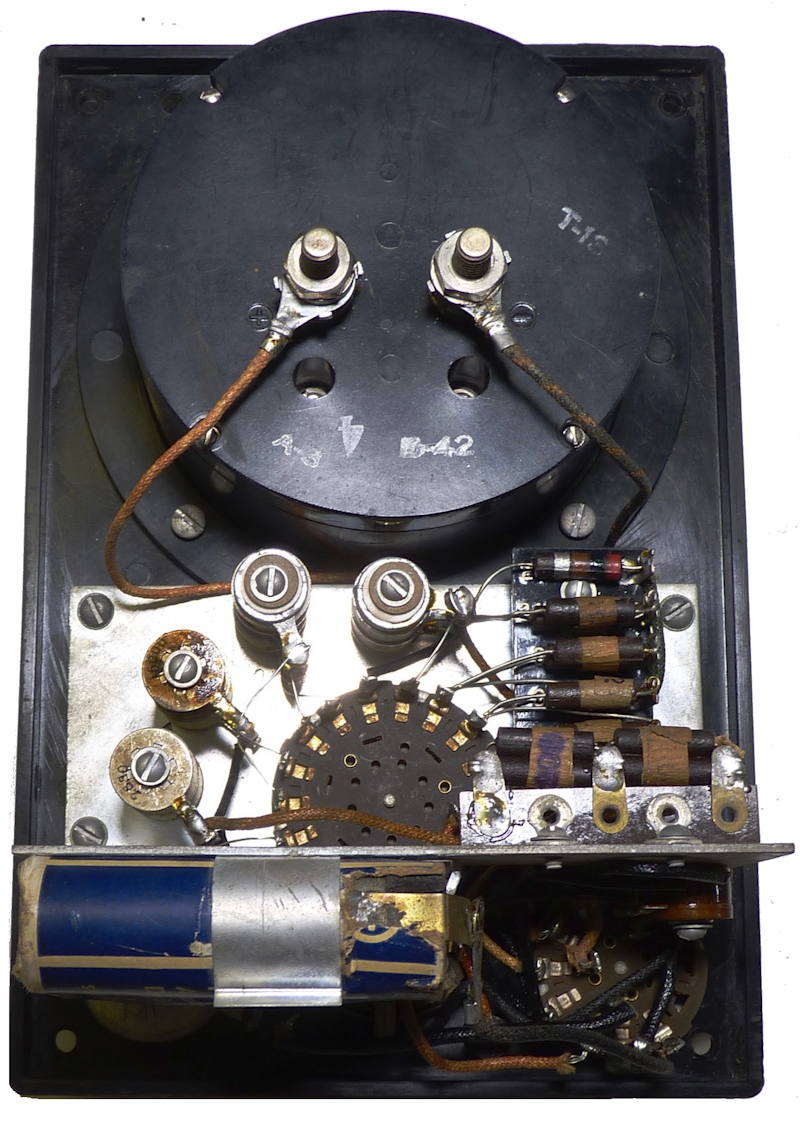
Two
views of the interior
Note the labelled parallel combination
of carbon resistors on the right hand tag strip
The case was fairly grubby when I received it and the leather
carrying strap was broken but the meter itself was quite clean. I soon
found out that it would not work on any of the
ranges and the battery which had been in place for many years had
unsurprisingly not
leaked and corroded the interior. I have never seen this type of
battery before and although it fits nicely in the battery holder it is
not the type specified for the instrument which must have had terminals
because the leads had been soldered to the brass springs on this one.
You will note the price of the battery was sixpence farthing. Farthings
ceased to be minted in 1956 and ceased to be legal tender in 1961.
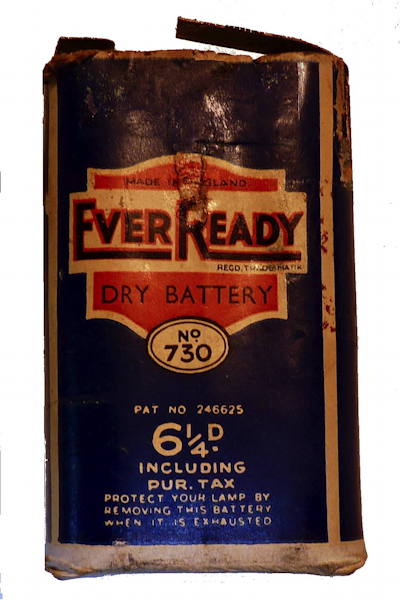
Suspecting the cause of the meter not work
on any of the voltage ranges lay in the meter movement I disconnected
it and and found it to be open circuit. My heart sank thinking that at
some point in the past it had been irreparably damaged by someone
inadvertently
applying a high voltage on one of the lower ranges. However, nothing
venture nothing gain as they say, I removed the meter took out the four
tiny screws that held it together and found that the coiled swamp
resistor had come adrift from the rear connection to the moving coil.
After a couple of attempts I managed to solder it back in position and
found that it was then perfectly fine. I have tried it on the DC
current and voltage ranges and found it to be within the accuracy
stated on the instruction insert.
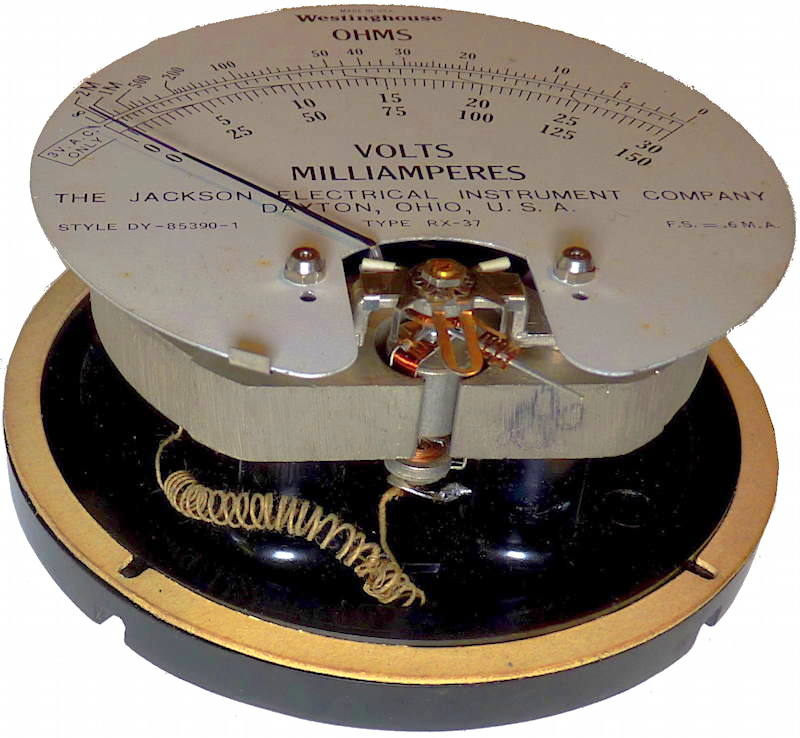 ;
;
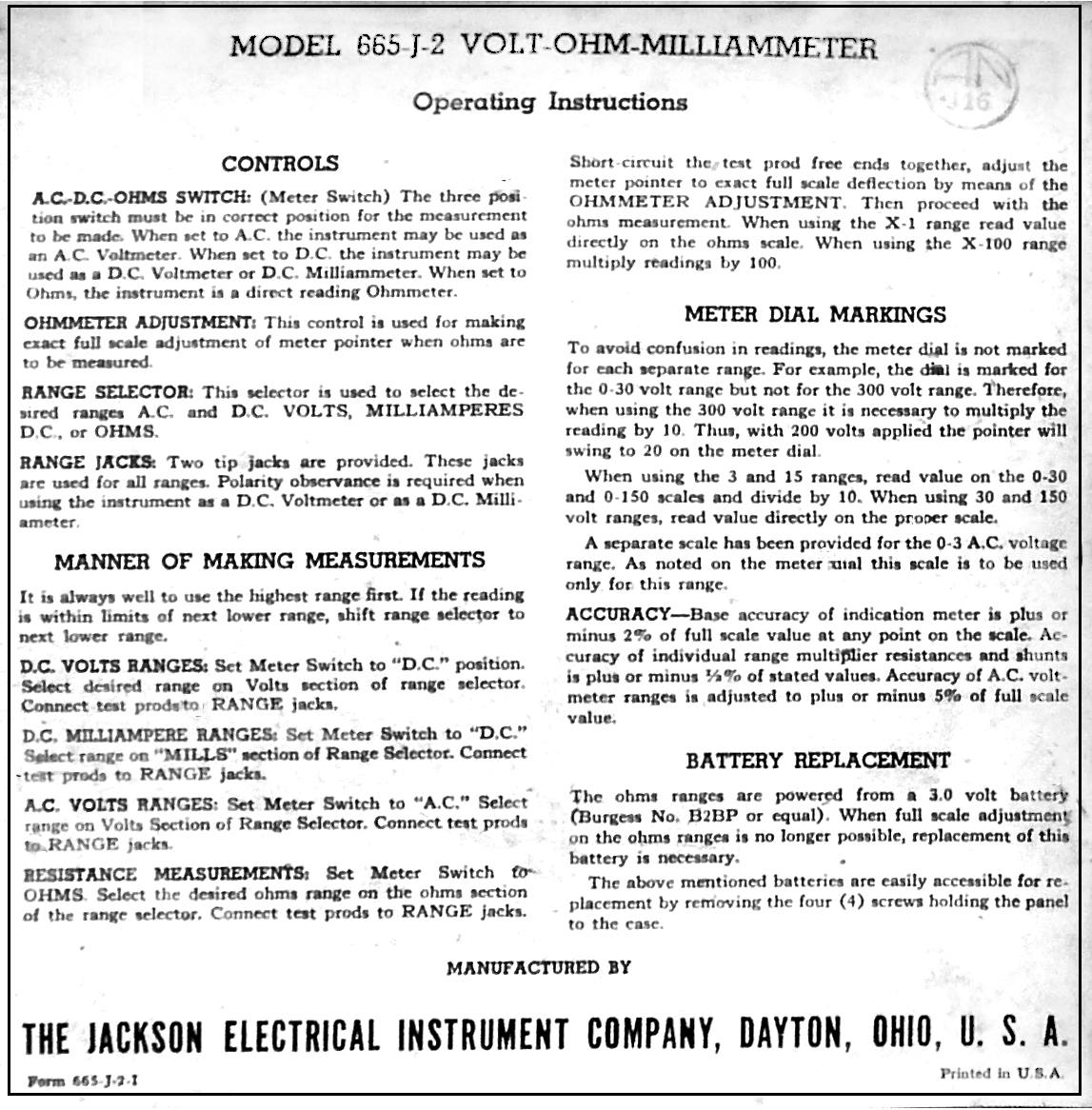
Open images in a new window to view ithem at larger scale
Batteries one 3 Volt battery (Burgess 422 or
equivalent) Two "AA" cells soldered
together have now been used as a replacement for the former.
How old is it? The back of the meter casing has been stamped
with what appears to be 6-42 so I guess it was manufactured in 1942.

